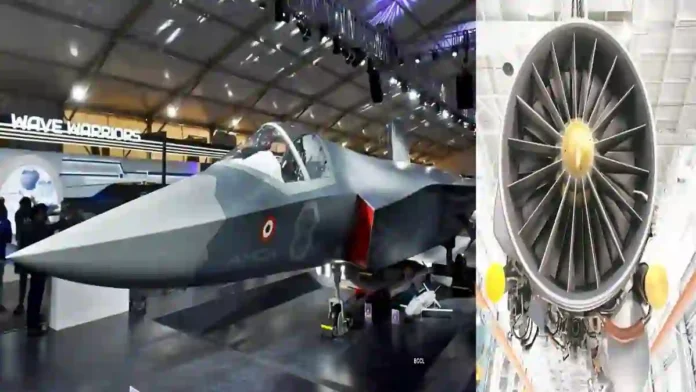India has finalised a landmark defence agreement with the United States for the acquisition of fifth-generation aircraft engine technology, a deal valued at approximately ₹14,000 crore, which crucially includes an unprecedented 80 percent technology transfer to Hindustan Aeronautics Limited (HAL). The pact, centred on General Electric’s F414 turbofan engine, is expected to be the backbone of India’s indigenous Advanced Medium Combat Aircraft (AMCA) program, slated for induction into both the Indian Air Force and the Indian Navy around 2035.
Officials familiar with the negotiation process have underscored that the consent for such a large-scale technology transfer is a significant breakthrough, as such concessions have rarely been offered in the aerospace domain by U.S. manufacturers.
The agreement envisions production of the GE-414 engines within India under HAL’s stewardship, with indigenous capability in design, manufacturing, and potential future upgrades.
To maintain project timelines for AMCA development, HAL has already procured 10 engines in advance. Industry observers highlight this as a stepping stone for India’s aero-engine ecosystem, which has long remained a strategic gap in the nation’s defence technology base.
Parallel to the AMCA-related engine deal, HAL is also ramping up its Light Combat Aircraft (TEJAS) production. The Indian Air Force will take delivery of two TEJAS MK-1 aircraft in October.
This follows the Cabinet Committee on Security’s approval on August 19 for the procurement of 97 more TEJAS fighters at a projected cost of ₹66,500 crore, adding to the earlier order of 83 aircraft.
To meet this expansion, HAL has contracted for 113 GE F404-IN20 engines worth ₹8,500 crore, ensuring that engine supplies will not bottleneck production. Despite ongoing tariff frictions between India and the U.S., General Electric has reaffirmed that these economic disputes will not affect execution of the TEJAS engine agreement.
Previously, India had ordered 99 F404-IN20 engines in 2021 at a cost of ₹5,500 crore, meaning that between both phases of procurement, HAL now has orders covering 212 engines from GE, cumulatively valued at close to ₹14,000 crore.
Read- India Is Upcoming Superpower With A Lot of Talent, Says DG Israel Ministry of Foreign Affairs
Read- India Targets 200-Plus Warships, Submarines By 2035 To Counter Pak-China Naval Threats
HAL is steadily expanding its industrial capacity to meet these demands. Beyond its two active TEJAS production lines in Bengaluru, a high-tech assembly line has been installed in Nashik, from where the first two TEJAS aircraft of the latest order will be handed over by Defence Minister Rajnath Singh in October.
Plans are already underway for yet another dedicated assembly line, which will raise annual production capacity to 24 aircraft. The new TEJAS variants entering service come with a wide spectrum of integrated weaponry, ranging from short-range air-to-air missiles to advanced beyond-visual-range and air-to-surface strike systems, with all associated test flights and validation completed.
The pace of induction reflects both the maturing of India’s indigenous aircraft development program and calibrated external partnerships to fill specific technological voids such as engine systems.
Experts in the sector note that the confluence of these deals signifies more than aircraft production: it marks India’s most serious push toward building an indigenous engine development capability in collaboration with foreign partners, potentially freeing the country from its long-standing dependence on external suppliers for advanced propulsion technology.
The AMCA program, supported by the GE-414 agreement, is intended not just to deliver an indigenous fifth-generation fighter but also to establish the industrial competencies required for future sixth-generation combat platforms.
The overlapping timelines for TEJAS deliveries, engine procurements, and AMCA propulsion developments illustrate India’s two-track strategy—strengthening the IAF combat fleet in the immediate term, while investing in technologies essential for long-term strategic autonomy.
This ₹14,000 crore investment, with its large component of technology transfer, thus stands as one of the most consequential defence industrial agreements in India’s recent history.
Based On Bhaskar Report
Agency




